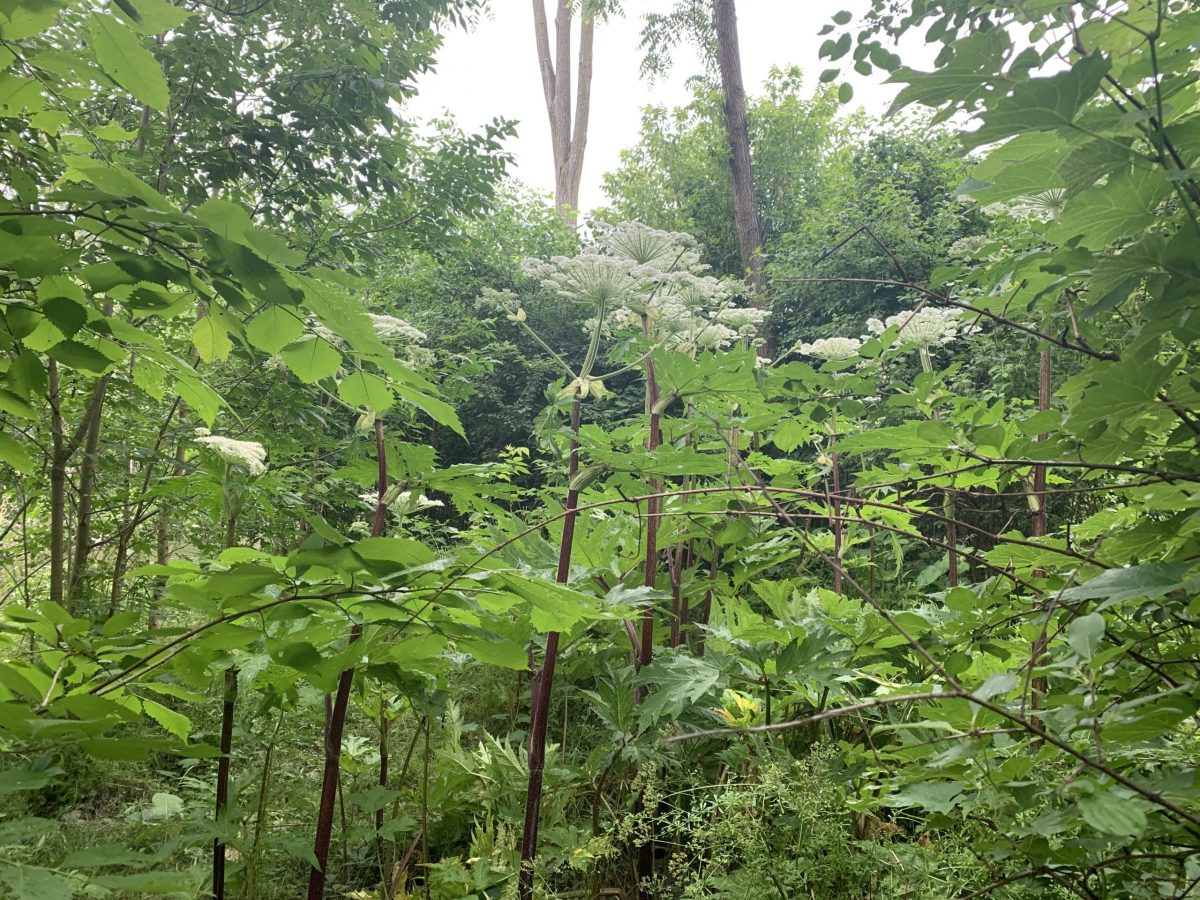Giant Hogweed is a plant from southwest Asia that was brought to North America as a garden ornamental plant. It’s been present in Mississauga since 2011.
The plant is toxic to humans. Contact with sap can cause severe burns when exposed to sunlight. If exposure is suspected, wash the area with soap and water, cover it for 48 hours, and watch for a reaction. The sap can also cause blindness if it gets into the eyes.
What it looks like

| Form | A large non-woody herb that can reach up to 6 metres when flowering. |
|---|---|
| Habitat | Meadows, ravines, and along forest edges and streams. |
| Leaves | Prominently spiked with a pronounced jagged appearance. It can grow up to 1 metre wide with a compound with 3 large, deeply cut leaflets. |
| Flowers | White and are clustered in an umbel (umbrella) shaped heads which can measure up to 1 metre across. |
| Fruit | Seeds are green-brown in colour and round. |
| Stem | Stem is thick, has coarse hairs, and can either be covered in purple blotches or be completely purple. |
There are many plants that look like Giant Hogweed, including Queen Anne’s Lace, Wild Parsnip, Cow Parsnip and Great Angelica. To learn more about Giant Hogweed and see more pictures, visit the Ontario Invasive Plant Council.
How it spreads
Giant Hogweed disperses seeds short distances by wind, and longer distances through moving water. Giant Hogweed is able to spread rapidly along roadsides, ditches and riparian areas (the transition area between land and water).
What you can do
The City controls and monitors Giant Hogweed populations that pose a direct risk to human health.
In 2011, the City started pesticide applications to eradicate the plant. This has successfully reduced the amount of Giant Hogweed and will continue until the spread of this plant is controlled.
Report a possible location of Giant Hogweed online or call 311 (905-615-4311 outside City limits).